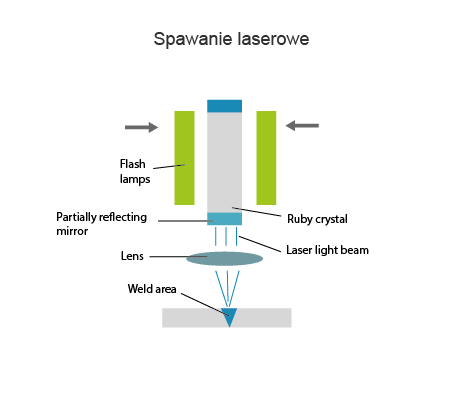Laser beam welding is a welding process that uses a laser to join two metal parts together. The laser beams are directed into the cavity between the two metal parts to be joined. The laser beams have sufficient energy to generate heat when they strike the metal components, melting the material of the two metal components that fills the cavity. After cooling, a strong weld is formed between the two components.
This is a very efficient welding process that can be easily automated using robotic machines. This welding technique is most commonly used in the automotive industry.

Laser beam welding
Type of technology
Development phase
Level of innovation
Scale of production
mass
Technology readiness level TRL
Description of the technology
Purpose of use
joining various materials
Industry usage
automotive industry
Alternative technologies
Visualisation of action
Advantages
- high weld quality
- easy to automate and robotise
- no electrode is required
- the tool does not wear out as it is a non-contact process
- welding time for thick walls is reduced
- possibility to weld in hard-to-reach areas
- possibility to weld metals with different physical properties
- it does not produce any X-rays
- possibility of welding in air (no vacuum required)
Disadvantages
- expensive equipment
- high maintenance costs
- some metals may crack due to the rapid cooling
- operation of the laser requires highly skilled personnel
- weld thickness is limited to 19 mm
- the energy conversion efficiency of laser beam welding is very low
Workpiece material types
- all material groups
- ferrous metals
- non-ferrous metals
- non-ferrous metals alloys
Examples of products
- steel structures
- propellers
- rudders
Implementation of the technology
Required resources
- expensive welding equipment
Required competences
- training in technology
- training in the use of a laser welding machine
Environmental aspects
Expert evaluation
Development centers
- AGH University of Krakow
- Opole University of Technology
- Institute of Metallurgy and Materials Science of Polish Academy of Sciences
- Warsaw University of Technology
- Cracow University of Technology
Legal conditions
- none
